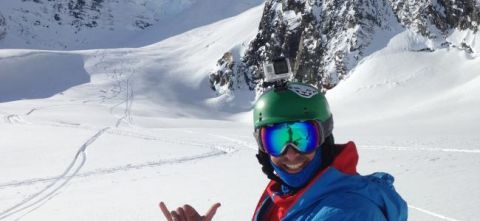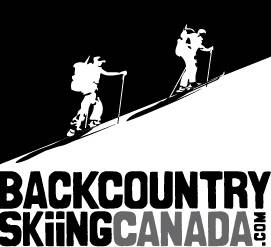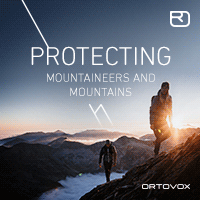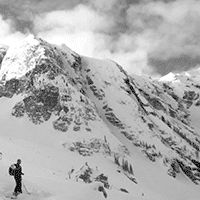Making Peace with Meteorite. Cool article from Skiing Mag
Just saw this cool article on Backcountry Skiing Canada friend Eric Henderson.
It's all about his return to Meteorite Mountain in AK, scene of a serious fall for him five years ago.
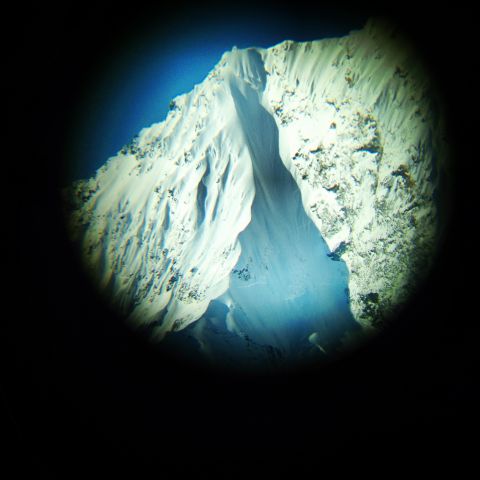
Making Peace with Meteorite
A former Alaskan heli-skiing guide revisits the line that almost killed him.
By Sam Bass, Publisherd in Skiing Magazine
~~~~~~~~~~~~~~~~~~~
In April of 2009, Eric Henderson was living every ski bum’s dream. He had worked six springs for Valdez Heli-Ski Guides, showing clients around Alaska’s Chugach Mountains. He spent winters skiing and guiding in Wyoming’s Teton backcountry and at Jackson Hole Mountain Resort. He was skiing more days in one season than most of us can hope to wring out of five.
Then, in one fateful turn, everything changed. Henderson was making a late-day run down Meteorite Mountain—a big, steep, classic Chugach line—when he fell and broke his neck. Airlifted to Anchorage, he underwent surgery the next morning and, a week later, returned to his home near Jackson to recuperate.
Though he dove into his new life with the verve that friends and family say defines him, Meteorite still haunted his dreams. It had forced him away from Valdez, and the life he knew, so abruptly. So unceremoniously.
As the years ticked by and he grew stronger, he quietly resolved to return to Valdez—and to Meteorite—to find some sense of closure. He hadn’t been back to Alaska since.
On Friday, April 11, 2014—just shy of five years after his fall—he did just that. Along with a strong team of skiers sponsored by gear manufacturer Dynafit, the brand for which he now works as Communications Manager, Henderson climbed and skied Meteorite without mishap.
We caught up with him on April 16, the five-year anniversary of the accident. Here’s what he had to say.
So…what did you do last week?
I flew over to Anchorage on April 9th and met up with Cody Barnhill, Jamie Laidlaw, Marshal Thomson, Donny Roth, and Andrew Whiteford and then we headed to Thompson Pass to test new Dynafit prototype skis. In the process, we wanted to ski some big peaks from the Richardson Highway near Thompson Pass, peaks that are normally only skied by heli groups. Diamond Peak, the Tusk, RFS, Meteorite, and some of those bigger peaks were the objectives.
Alaska weather is always a crapshoot, but you lucked out?
Yes. When we arrived it looked like we’d have two clear days. We skied one day of powder and then we decided we were gonna go for Meteorite without a warmup—just go for it, based on the weather and conditions.
What does Meteorite mean to you?
Meteorite is especially significant for me because five years ago to the day I was plucked off the face after falling in a serious head-over-heels crash on the run’s lower half. My heli-ski guiding career of six years in Alaska quickly ended, within a turn. I never returned, never went back to Valdez until today.
Describe your return.
We started at 1:30 a.m. We hiked for six miles and gained 500 feet. After that six miles we had two miles to the summit but had to gain more than 5,000 feet. From 3:30 to 9:30 we were traveling through glaciated terrain to get the face. It was 12 hours round trip from car to car. It has definitely been toured before, but most people take snow machines in the six miles. I know that we’re one of the few groups to do it from the road without snow machines.
We had a party of six, and we needed everyone to help us get to the face. But I was not going to allow six people on the face. Only four. Initially it was going to be myself, Jamie Laidlaw, Donnie Roth, and Cody Barnhill. But when we actually got to the base of the face, it was clear that Cody wasn’t feeling it. He made an amazing decision based on self-awareness to pull aside, and he asked Marshall to go in his place. We had a small window, and we didn't want to get landed on once heli-operations began. We had a feeling that the heli operators would come and see us.
Once we started climbing, we travelled really well together. Jamie Laidlaw was an absolute maniac. He led the whole thing. He climbed nonstop, Himalayan-style. He has climbed all through the Himalaya and he really kicked into that Himlayan mountain spirit. I was able to draft him and he just kinda pulled the rest of us up. And then we topped out at 9:30 a.m., skied it, and we were drinking spicy tequila at the harbor with Skiing Magazine by 2 p.m. It was really a magical experience for the team.
How’d it feel for you, personally?
It felt really good. At one point, probably around sunrise, having climbed past the point where I was hurt, I felt this weight lifting away. And then finishing the run was an amazing experience—a sense of accomplishment from climbing, exerting my energy to get there, and then actually not falling and successfully making that descent. Now I’m back with the kiddos.
Describe the particulars of the mountain.
Meteorite is an iconic testpiece of the Chugach. It has a northwest face that, if you ski it from top to bottom it would be more than a 5,000-foot run. The entrance to the face itself is 50-plus degrees and has a prominent gunbarrel that runs down the left side, which pinches off and spits you out onto a wide face. It’s definitely a no-fall zone. No transitions, super steep, two bergschrunds to negotiate, slough management is vital, and awareness of variable snow conditions and glacial terrain is essential. If you mess up high on the face, you're gonna take a serious ride.
Do you remember the accident?
I never lost consciousness. I intentionally held onto my head, to protect it while I was falling, to keep myself from losing consciousness. And then I realized I needed to stop in order to avoid this big cracked-ice formation.
I let go of my head, grabbed my neck, dug my elbows in, and was able to stop. And in that process I felt my neck crack. I burned through my jacket’s elbows. I did a quick head to toe and everything felt fine except for my right shoulder, which felt dislocated. And my left knee was feeling a little tweaked, but I was like, "OK, I’m alright," so I got on the radio and called down to the ship.
My skis had stayed on, so I skied down to the helicopter, probably another 800 feet or so. I loaded up, and when the helicopter actually lifted, the severity of the injury dawned on me. The gravity, the torque, the force of the helicopter, I knew I was seriously hurt. What I did not remember is that I actually got out of the helicopter. I remember Doug Workman, who was featured recently in your magazine, and others cutting my clothes off and backboarding me after I had apparently fallen to my knees trying to walk across the heli pad.
I was lifeflighted to Anchorage and had surgery the following morning. Two titanal plates, a fusion, and a cadaver piece, with two screws holding them together. They’re still in there. I made it back to Jackson about a week after the injury, and then recuperated on our farm. Not long afterward, my wife Megan and I started hosting ‘On The Farm’ dinners. It was a major transition time in my life. I knew I wasn’t going back to ski guiding.
What’s happened in the interim? Describe your new life.
I’ve had two children since then. When you're used to your life being on the road, there’s not as much time to ‘practice,’ and since I was home I had a lot of time to ‘practice’ and I was able to produce two beautiful children as well as get married on top of Rendezvous Mountain to Megan, on the day before Valentine’s Day. After one of our farm-to-table dinners I was walking with Chris Denny, who runs a successful PR firm out of Jackson called Denny Ink, and he asked me what I was gonna do this winter. In a half-kidding way I said, "waiting for someone like you to give me a job." And sure enough, he had an opportunity for me to work with him in the office at Denny Ink doing brand communications and public relations for brands like Jetboil, Dynafit, Salewa, Nordica, and Arc’teryx. And then about four years later I sold two homes in Victor, Idaho, along with an organic farm, and moved our family of five down to Boulder, Colo., where I took a full-time job with Salewa North America (which owns Dynafit).
Why did you go back to Meteorite? Why take the risk again?
Meteorite was just one of those things I felt like I needed to accomplish in order to move forward with all of the other great things I’ve got going on. Yes I wanted to go back and say goodbye to the guides and Scott Raynor, [owner, Valdez Heli-Ski Guides], and Valdez and the harbor and all the great things that are up there. But I wanted to ski Meteorite for my family—and to lift its weight off my shoulders. Without Meteorite and the accident I wouldn't be where I am today, but at the same time I wanted to give it a little kick in the nuts. And on top of it, there’s no better Dynafit objective out there than to go fire a huge peak in the Chugach, as a team, from the road, in pure style. All of the elements that Dynafit North America represents put into one trip. It was our first initiative as a North American athlete team, and we feel like it’s a pretty solid statement. Those guys are all still up there, and they want to do Diamond Peak’s west face from car to car in six hours. It's snowing again and they should have another week of great skiing.
Henderson celebrating at the finish line
